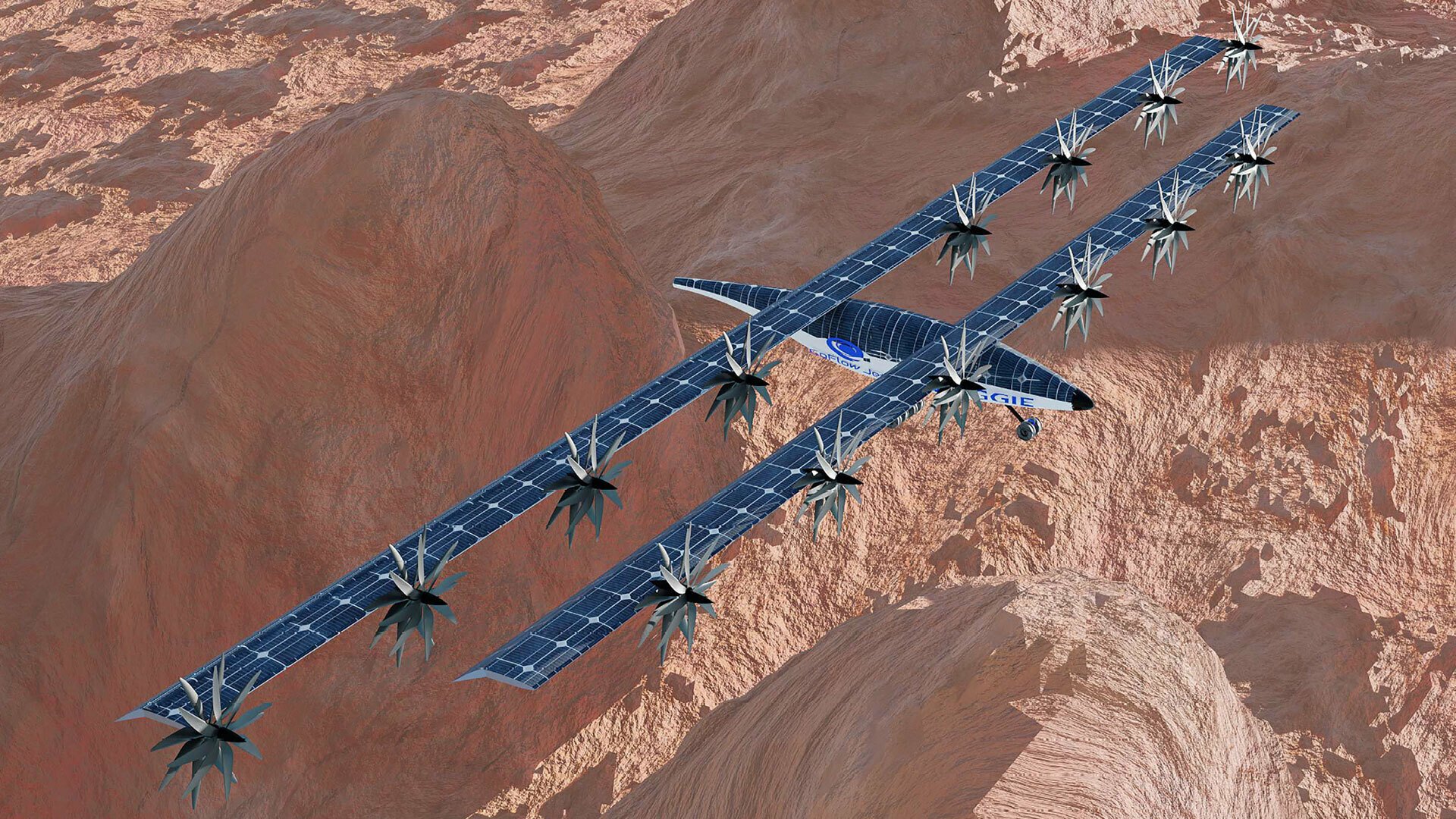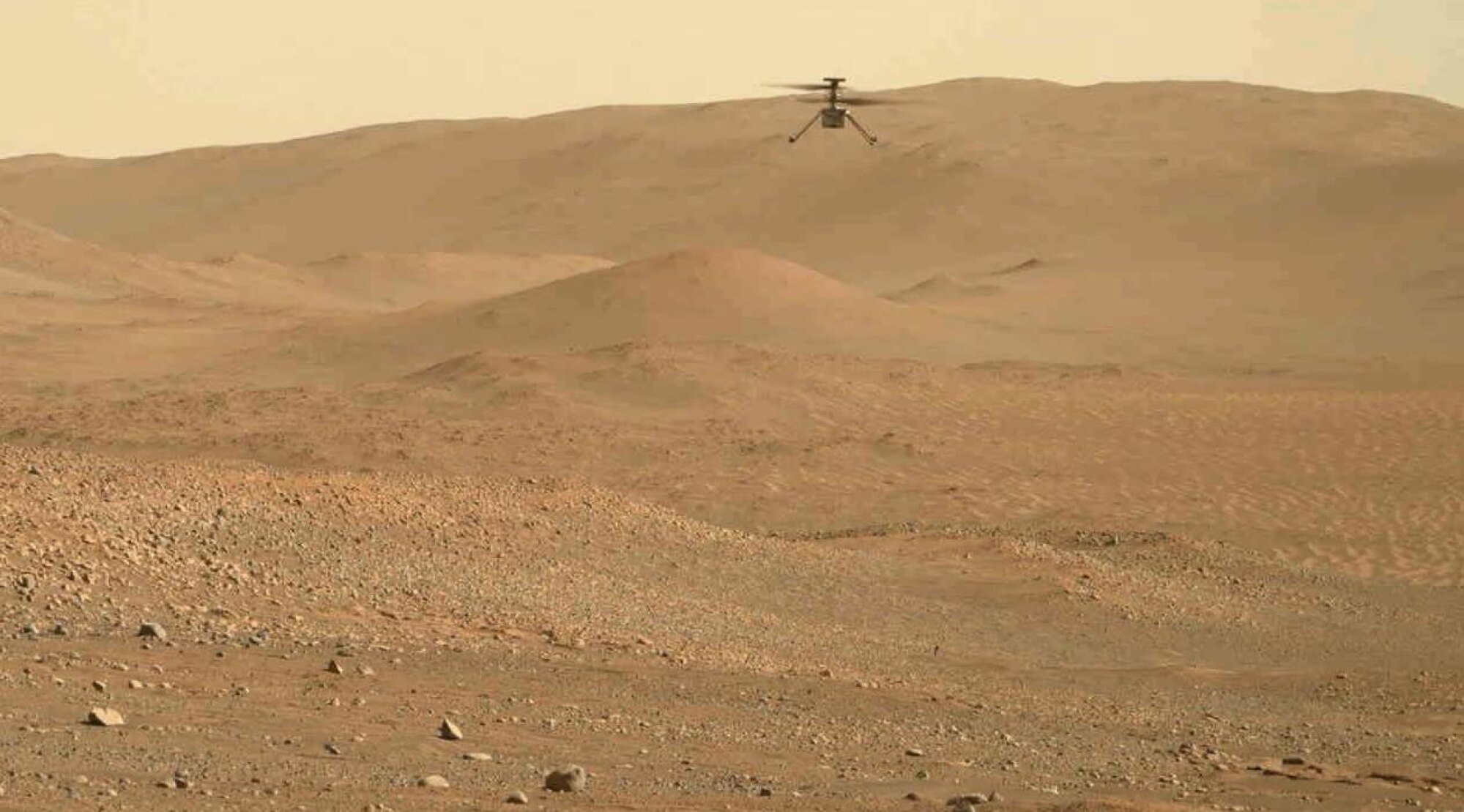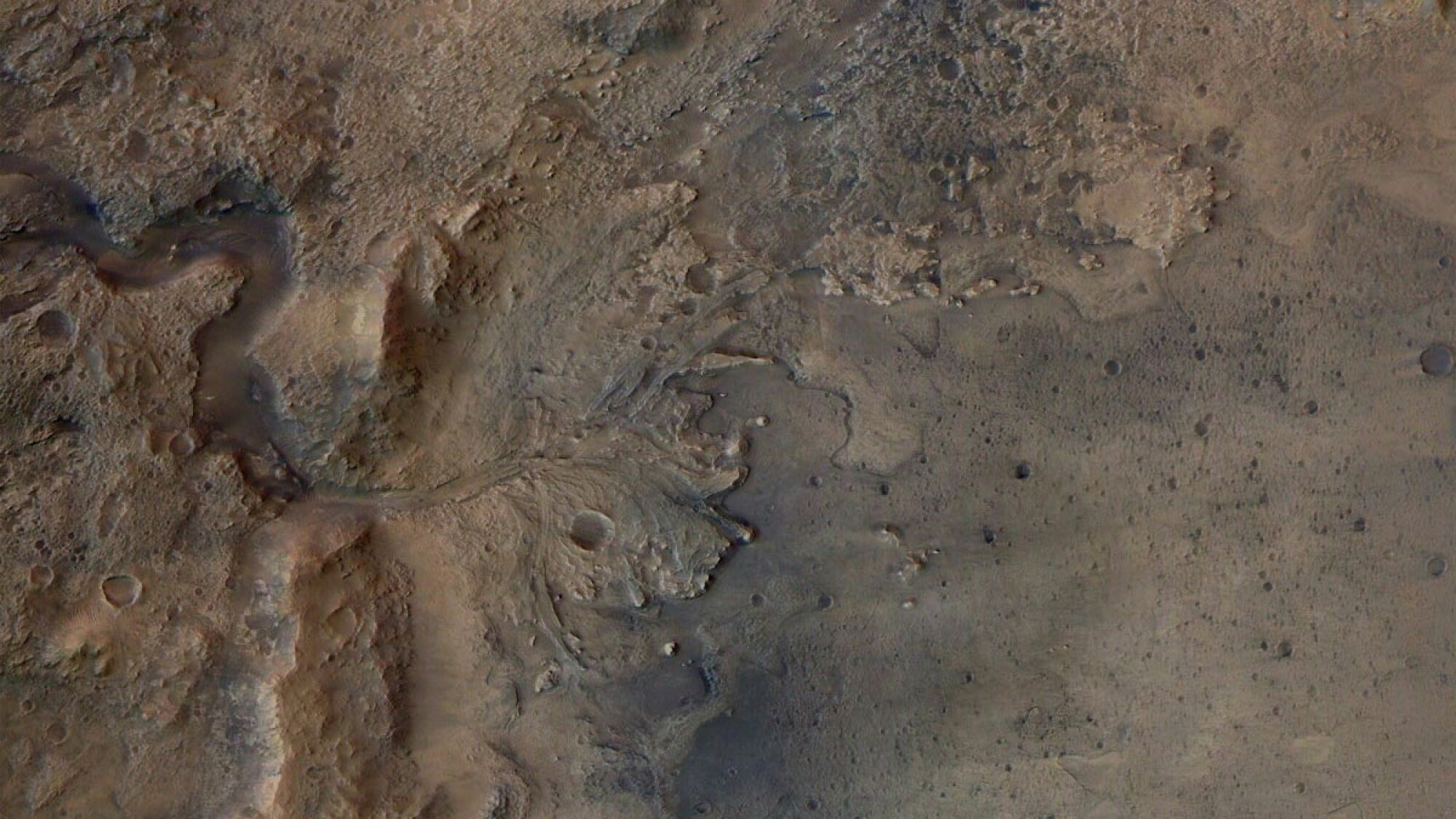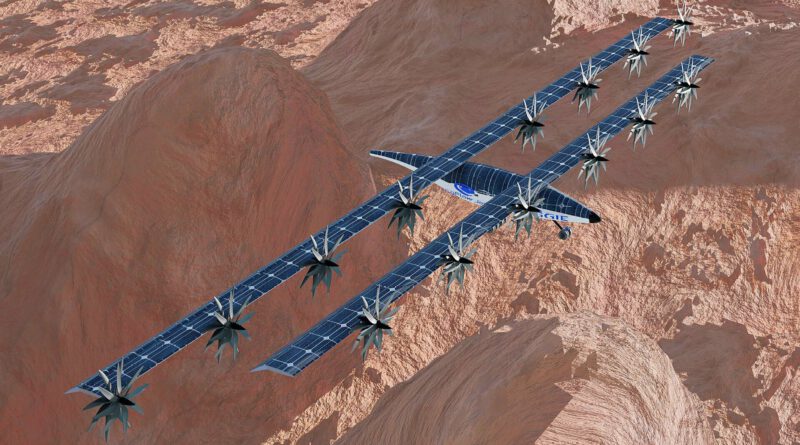NASA lost its Mars helicopter. Now it’s looking into a Martian plane.

NASA wants to hear far-out, unconventional, and out-of-this-world aerospace ideas.
The space agency’s Innovative Advanced Concepts (NIAC) program — which encourages “visionary ideas that could transform future NASA missions with the creation of breakthroughs” — funds research into a diversity of ambitious proposals it finds compelling. For example, NASA is currently funding an idea (still only an idea) to construct a telescope the size of Washington, D.C., on the moon.
Now, the program has released a new batch of innovative concepts that it’s chosen for further theoretical development, and included is a plane designed to fly around Mars — and stay aloft in the extremely thin Martian atmosphere. The proposal is called MAGGIE (short for Mars Aerial and Ground Intelligent Explorer), and it’s an aircraft envisioned to provide unprecedented exploration of Mars’ surface.
And unlike planes on Earth, the craft is designed to take off and land vertically, like a helicopter.
“You can land any place you feel is interesting,” Gecheng Zha, the director of the CFD (Computational Fluid Dynamics) and Aerodynamics Lab at the University of Miami, told Mashable.
The Martian plane is a novel idea, but perhaps not as wild as it sounds. NASA is only spending some $ 175,000 on 13 different awardees for this early “Phase I” conceptual research. But it comes with the opportunity for NASA to further develop such aerospace technology and move innovation to the next phase — which means even more funding and support.
“It can’t just be science fiction.”
“Anything proposed to NASA has to be very, very well thought out,” Zha, who is also the president and founder of Coflow Jet, the aviation technology company that proposed the MAGGIE craft, emphasized. “It has to have scientific merit. It can’t just be science fiction.”
A plane on Mars
The Martian aircraft, which would be powered by the solar panels spread across its wings, has a strong Mars influence: NASA’s Ingenuity helicopter — a NIAC-graduate and the first craft to make a powered, controlled flight on another planet. The small, solar-powered experimental chopper, with four-foot-long rotor blades that spun a blazing 2,400 revolutions every minute, made over 70 successful flights before meeting its demise on Jan. 25 after a rough landing. Originally, engineers hoped it might fly five times, if at all.
“We were enlightened by Ingenuity,” Zha said.
Yet a plane would be able to carry significantly more weight than a future Martian helicopter, and would fly more efficiently on a distant world where craft would almost certainly need to rely on the sun for energy, Zha explained. (A nuclear-powered endeavor, like the Perseverance rover, requires a heavy engine. That would make lifting into the air difficult.)


Flying anything on Mars is a great challenge. That’s because, compared to Earth, the Martian atmosphere is quite thin. Its volume is about 1 percent of Earth’s, making it difficult to generate the lift needed for flight. Yet the MAGGIE plane’s narrow double-wings are designed (conceptually) to produce many times more lift than conventional aircraft on our planet.
Once in the air, the plane would cruise at some 60 meters per second, or nearly 135 mph. That’s significantly slower than, say, the commercial jets you’re used to flying on. But on Mars, flying slower is imperative. Flying quickly burns too much energy.
“You don’t want to fly too fast,” Zha emphasized.
Beyond its extraordinarily thin air, Mars has another notable obstacle for aircraft. There are no runways. And Martian astronaut missions certainly aren’t going to have the time and ability to clear land and boulders to create an airfield. So the craft must take off and land without one.
“You don’t want to fly too fast.”
The trick is in the wings’ flaps. The propellers are always facing forward, but by turning the wing flap down to 90 degrees, the airflow from the propellers creates lift. “That will get the plane up vertically,” Zha explained.
One day, perhaps, a plane like MAGGIE will robotically explore the Martian surface from some 3,280 feet (1,000 meters) for interesting places to land and capture samples. It will be a compact plane — MAGGIE is currently designed with about a 26-foot (7.85 meters) wingspan — so it could fit and fold inside a large rocket. But it would allow unprecedented exploration of the Red Planet, a world that once gushed with water and could have potentially hosted primitive life — if life ever existed on Mars, that is.
Planes on Mars may also prove essential for Martian travel later this century and beyond. After all, it’s hard to get around on a world without an Interstate Highway System.
“We provide the possibility to move around,” Zha said. “There are no roads there.”

